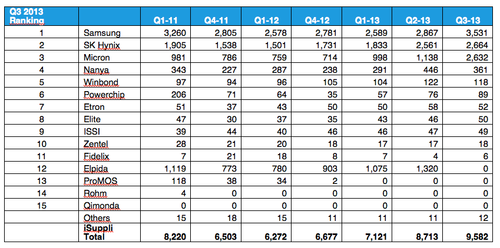Lfoundry Rousset, the French chip manufacturing site of Lfoundry GmbH, has been declared bankrupt by the Commercial Court of Paris, with an immediate stop to activities on the site from Dec. 26 and the loss of 613 jobs, according to French reports.
The move has prompted angry demonstrations by the workforce in Rousset and Marseille as well as allegations that Lfoundry in Germany misappropriated €20 million (about $27.5 million) from Lfoundry in France. The German group is now the subject of a French criminal investigation, according to a report in Le Figaro.
Analog and mixed-signal chip maker Lfoundry bought the Rousset site from Atmel Corp. in 2010 for €1 together with a lengthy order book and Atmel was the main customer for Rousset until mid-2013. However, when Atmel's requirement turned down suddenly in June 2013 the Commercial Court in Paris placed Lfoundry into receivership with a six-month observation period to give time to develop a continuation plan for the business.
A voluntary redundancy plan was sketched out in November 2013 (see Jobs to go at Lfoundry Rousset) but it has failed to postpone the closure of the business.
The Rousset site will be preserved for a further three months while efforts continue to try and find a buyer but this will be for the site and equipment rather than for the business as a going concern with employees.
General Vision Inc. (Petaluma, Calif.) has expressed an interest, according to Varmatin, a local online publication. However, General Vision is a developer of image recognition systems rather than a chip manufacturer. The company is led by French expatriate imaging experts Anne Menendez and Guy Paillet.
The German parent company Lfoundry GmbH was formed in 2008 by the management buy-out of a Renesas wafer fab in Landshut, Germany. However, it subsequently closed the Landshut fab in 2011 after if failed to find sales to replace legacy orders from the original owner of the fab.
Immediately prior to Lfoundry Rousset being put into receivership, Lfoundry GmbH entered into an agreement to acquire Micron Technology Italia, Srl. and all of its semiconductor fabrication facility assets in Avezzano, Italy (a fab originally constructed and operated by Texas Instruments). In June 2013 it was announced that the takeover would be undertaken by way of a 50:50 joint venture between an entity called LFoundry Europe and Marsica Innovation SpA, a company owned by the Italian fab's management.
The Rousset wafer fab made chips on 200-mm diameter wafers in a clean room of about 12,000 square meters. It has a manufacturing capacity of about 25,000 wafer starts per month, according to data provided by the company in 2011.

